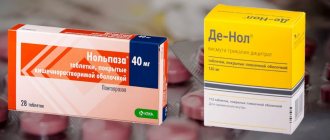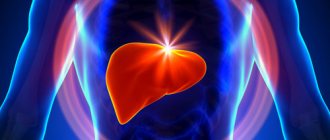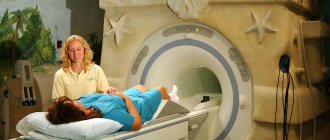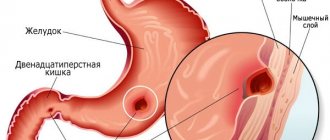Indications
The procedure with anesthesia is carried out at the request of the patient and in the absence of contraindications to anesthesia.
Colonoscopy must be performed under general anesthesia:
- for children, since during a colonoscopy it is important to lie still and not make sudden movements;
- if there are adhesions in the abdominal cavity, since in such a situation the patient feels discomfort, colonoscopy can be very painful;
- with ulcerative or destructive damage to the intestine, since in this case any movement of the patient can lead to intestinal injury.
For other patients, sedation and pain relief may be used.
There is one contraindication for performing colonoscopy under anesthesia: intolerance to the drugs planned for anesthesia, if the anesthesiologist cannot find alternative means. Given the variety of modern drugs, this situation is unlikely.
Colonoscopy is intended to remove tumors, biopsy, examine, and photograph the colon. It is indicated in studies of intestinal diseases. Used for complex bleeding and emergency pathologies.
Doctors include contraindications:
- infectious diseases;
- peritonitis;
- failure of the lungs and heart;
- blood clotting pathologies;
- severe degrees of colitis (mainly ulcerative);
- allergy;
- pregnancy.
This method of examining the intestines using anesthesia has a number of advantages for both the patient and the doctor. Medication-induced sleep, caused by intravenous administration of drugs, allows the patient not to feel pain and discomfort, and the specialist to calmly examine the intestines, performing certain procedures during the study.
Colonoscopy under anesthesia has a big advantage in that there is no spasm of the smooth muscles of the intestine, which appears with minor pain and the patient’s reaction to it. This allows the doctor to easily and quickly move the device through the intestines and examine it. Indications for performing a colonoscopy under anesthesia are:
- suspicion of formations in the intestines of a benign or malignant nature;
- persistent anemia;
- causeless low-grade fever;
- increased pain sensitivity in the patient;
- weight loss with the same diet;
- prolonged pain in the abdominal area;
- disturbances in the functioning of the intestines in the form of causeless diarrhea, followed by constipation;
- the presence of blood in the stool, determined both visually and in a stool occult blood test.
Despite a number of positive aspects of performing colonoscopy under anesthesia, there are a number of contraindications when this type of anesthesia is contraindicated. These include the following conditions and diseases of the body:
- chronic cardiac and respiratory failure, in the acute phase;
- previous cerebrovascular accident;
- hypertension 2-3 degrees;
- chronic diseases of internal organs with pronounced clinical manifestations;
- heart rhythm disturbance;
- malignant intestinal tumor with metastases to neighboring organs;
- any stage of pregnancy;
- adhesions in the large intestine due to injury or previous surgery.
In some cases, experts recommend examining the large intestine under local anesthesia. The diagnosis, according to patients, is well tolerated. Pain is observed in rare cases in individuals with hypersensitivity to it.
Discomfort appears only when air is pumped into the intestines to straighten its folds and allow better passage of the colonoscope. Indications and contraindications for the procedure without anesthesia will be the same as for diagnostics with anesthesia.
Considering that many patients have an allergic reaction to various medications, anesthesia will be an additional burden on the body. Therefore, more often the diagnosis is carried out without anesthesia, and before inserting the colonoscope into the rectum, local anesthesia is given with xylocaine gel or dicaine ointment.
During a colonoscopy, the doctor constantly maintains contact with the patient, noting his reaction. This point is positive when conducting diagnostics.
What is it and why is it needed?
The examination under anesthesia (with sedation) is done using a flexible colonoscope tube equipped with video cameras and light sources. Images of changed areas of the colon are displayed on the screen so that the doctor can accurately diagnose the disease.
During the examination, the patient lies on his left side with his legs raised to his chin. The colonoscope is inserted into the colon through the anus.
You can have a colonoscopy under general anesthesia to:
- remove folds on the mucous surface;
- the doctor was able to examine in detail all parts of the intestines;
- improve the passage of the endoscope;
- remove small tumors (no more than 1 mm in size);
- take a biopsy if necessary.
In addition, colonoscopy is done to keep the patient’s condition under control after certain therapeutic measures.
Advantages and disadvantages
The main advantage of a colonoscopy during sleep is that the procedure allows you to examine all parts of the colon without causing pain to the patient.
During the examination, the doctor may also:
- detect and remove polyps;
- stop bleeding in the intestines and so on.
And also the advantages of such a survey are the following facts:
- The time required for diagnostic procedures is significantly reduced. The specialist has more time for the procedure itself, and not for conversations with the patient.
- Colonoscopy is performed under anesthesia for children. Subsequently, they can undergo the procedure again, if necessary, without experiencing a feeling of fear.
- The risk of complications during the examination is minimized. The intestines are in a relaxed state, in which the likelihood of perforation or damage to the colon is virtually eliminated.
Disadvantages of colonoscopy in a dream:
- Any medicinal sedatives that are used as anesthetics are harmful, as they have a powerful toxic effect on the body, in particular on the liver.
- During general anesthesia, amnesia occurs in 100% of patients.
Colonoscopy - the essence of the procedure
Intestinal endoscopy is carried out not only for special indications, but also as a preventive examination, especially for persons after 45-50 years. Gastrointestinal oncology tends to increase the incidence of the disease, and colonoscopy makes it possible to detect malignant pathology in the early stages of development. Endoscopic examination of the large intestine allows the following manipulations:
- identify various pathologies, both benign and malignant;
- collect material for histology;
- carry out therapeutic measures, delivering medications directly to the site of inflammation.
This technique is carried out with a special device, that is, a colonoscope, which is a long flexible probe with a video camera at its end. An image of the internal state of the intestine is displayed on the monitor screen, which allows the specialist not only to visually evaluate the organ, but also to record on media.
Methods of carrying out
There are four options available for colonoscopy: no anesthesia, local anesthesia, general anesthesia, sleep. Gastroscopy (examination of the stomach) often uses only local anesthesia and sleep.
Local anesthesia
If the patient has noticeable pain in the anus, then local anesthesia is used. Mainly pain-relieving freezing ointments.
General anesthesia
General anesthesia is indicated:
- children under 10 years old;
- the presence of pathological processes in the small intestine;
- the presence of massive adhesions at the examination site;
- anemia;
- bleeding in the intestines;
- chronic diarrhea, constipation, the intestine contains foreign bodies;
- increased flatulence;
- causeless weight loss, weakening;
- indications for oncology.
Contraindications
Examination of the intestine under anesthesia cannot be used in all individuals. Contraindications for its use:
- severe stenosis of the aortic and mitral valves;
- period of exacerbation of bronchopulmonary pathology (bronchial asthma, chronic bronchitis);
- acute diseases of the psyche and nervous system.
Children have an even wider list for the use of drug pain relief:
- acute diseases of an infectious nature (lungs and other organs);
- unexplained increase in body temperature;
- severe form of malnutrition;
- pustular skin diseases;
- advanced forms of rickets.
Feedback from patients after a study using anesthesia.
The procedure, when carried out traditionally, leaves unpleasant memories for all patients. Many negative reviews are associated precisely with the pain that occurs as the intestines fill with air. Local anesthesia does not provide complete comfort during this manipulation. Usually the patient does not experience pain only when the tube is inserted into the anus, but when the colonoscope moves further, especially in hard-to-pass areas (splenic angle, the junction of one part of the colon to another), sometimes unbearable pain occurs. These side effects sometimes prevent the procedure from being completed, so it is better to think about the method of pain relief during the procedure and choose the most suitable one.
In terms of subsequent complications, reviews are mostly positive. Research rarely comes with health consequences. Unfortunately, there is a small percentage of those examined for whom, after this manipulation, the course of the disease was complicated or infection occurred. The most dangerous complication is perforation of the intestinal walls. Unfortunately, such a complication occurs precisely when anesthesia is used, since the patient and the doctor lose contact with each other, and it is difficult for the specialist to navigate without the patient’s prompting (when the pain becomes more intense). Overall, reviews of the anesthesia study are positive. This is especially important during repeated control studies, when the patient has to undergo such a procedure several times.
Survey process
Due to the complexity of the procedure, additional requirements are placed on the patient. You should not improvise, listen to the doctor who is trying to avoid discomfort for the patient during colonoscopy.
The examination takes place under anesthesia and without it in the morning. The patient undresses from the waist down. Receives disposable underwear. Position for colonoscopy: lying on your left side. Knees to chest. It is possible to turn on your back at the request of the doctor. Anesthesia is administered when indicated.
A colonoscope is inserted into the large intestine through the posterior opening. When straightening the intestinal lumen, the necessary air supply is maintained. A special attachment is used to take a biopsy.
During the examination, the patient experiences a feeling of fullness in the intestines. This is from the air supply. The excess will be removed through the endoscope channel upon completion of the procedure.
The procedure is not pleasant, especially when moving along the bends of the intestine, which intensifies the pain.
After a colonoscopy, the patient is allowed to eat and drink. If the feeling of intestinal fullness with gases persists, it is recommended to drink activated charcoal and rest on your stomach.
Differences in preparatory activities
To obtain a high-quality result of video colonoscopy, proper and high-quality preparation of the patient for the procedure plays a very important role. Examination of the large intestine requires adherence to general rules of preparation, which apply to both diagnostics under anesthesia and examination without it. It consists of the following activities taking place in 3 stages:
- Preliminary preparation - 5-7 days before diagnosis, stop taking antidiarrheal medications, drugs that contain fiber and iron.
- Diet – 3 days before the scheduled date, the patient switches to a special diet aimed at maximizing intestinal unloading. During this time, all protein products (meat) and those that produce a large amount of toxins are excluded from the diet. These are all fresh vegetables and fruits, rye bread, mushrooms, legumes, nuts, and some cereal porridges. The day before the examination, it is recommended to eat only liquid food. This is low-fat yogurt, semolina porridge, vegetarian soups with chopped vegetables. It is mandatory to drink up to 1.5 liters of water per day. 17 hours before the scheduled examination, food intake is stopped completely. That is, the last meal at lunch is in the form of a small portion of soup or broth. You are allowed to drink only water or weakly brewed tea until 11 p.m.
- Colon cleansing – carried out 1 day before the scheduled procedure. The most commonly used drug is Fortrans, which is started in the morning, according to the instructions, 2 hours after meals. The evening before the study, a cleansing enema is performed with boiled water using an Esmarch mug. If the patient suffers from constipation, laxatives are indicated.
If the patient has concomitant diseases that require constant use of medications, it is necessary to inform the doctor about this.
The intestines are considered prepared for the procedure if the stool remains transparent. If the diagnosis is carried out under anesthesia, the patient on the day of the study, 2 hours before the start of the test, but not later, is allowed to take a small amount of water, no more than half a glass.
When making a diagnosis without the use of anesthesia, you can drink 100 ml of tea with a spoon of sugar or honey immediately before the examination.
Description of the study
Colonoscopy is essentially a visual examination of the intestines “from the inside.” The informative value of colonoscopy is undeniable. However, it is resorted to as a last resort. Often the patient delays this diagnostic test, hoping until the last minute that other tests will help identify the problem. This is due to the fact that everyone experiences the procedure differently. Many people wonder if it hurts to have a colonoscopy? There is no single answer here: for some, the study is very painful, while others tolerate it easily.
Svetlana, 27 years old: “Colonoscopy: hell on earth”
A month has passed since I was subjected to the most terrible and painful procedure, and I still cannot forget this nightmare. For me, a colonoscopy was the final diagnostic chord. When the unexamined stomach organs were running out, it turned out that the only problem left to look for was in the intestines. In addition, it turned out that he could not be examined in any other way: neither ultrasound nor x-ray.
All hell broke loose with Fortrans, a special laxative prescribed before a colonoscopy. This is just a mega laxative: as soon as I was rinsed and sent to the toilets. But, as it turned out, these were trifles. It seemed to me that the worst thing was inserting the device into the intestines. And just as I decided to breathe a sigh of relief, my waking nightmare began.
Even a preliminary injection of painkiller did not help. I heroically tried to endure, but after a couple of minutes I gave up and began to moan, howl, cry and writhe. Then I realized that the expression “climbing up the wall” is not a metaphor. In general, the procedure resembles medieval torture. For about 15 minutes they literally mocked me. By the end, I was ready to lose consciousness.
When they released me, I couldn’t come to my senses for a long time. I barely made it home - crying and exhausted. My stomach hurt for two days, I couldn’t really sit, and the “bonus” of this was incessant diarrhea. The most annoying thing is that I didn’t need a colonoscopy. As it turns out, my intestines are in perfect order. But if suddenly I have to go through this hell again, I will not agree to it without anesthesia, under anesthesia - and nothing more.
Maxim, 34 years old: “I’ve had a colonoscopy a dozen times and each time the sensations are different”
Colonoscopy can be tolerable or very painful. It all depends on the characteristics of the patient: the general condition of the body, the professionalism of doctors and the equipment itself. It is interesting that abroad studies are not carried out without anesthesia; in our country, the procedure is performed under anesthesia only for a separate, very significant fee, and even then not in every hospital.
The last time I had a strong feeling that I was being impaled. I heard somewhere that an injection of no-shpa before the procedure will help relieve the pain a little. Oddly enough, when a colonoscopy is done with old equipment, with a black and white image on the screen, it is not as painful as with modern colonoscopes.
An important point: if you have not had any operations before a colonoscopy, the examination will not be so painful. They say that sensations depend very much on the shape of the intestine itself. Yes, for some this procedure is painless, but for others it becomes a real torture. Therefore, I do not support those who accuse those who allegedly lied about hellish torture. And it’s certainly stupid to compare colonoscopy with FGS. I didn’t believe it either until I walked in someone else’s shoes and became convinced that this examination could be either easy or very difficult, depending on the circumstances.
Possible complications
Consequences encountered:
- Hepatitis B;
- danger of deformation and damage to the large intestine when passing bends;
- splenic rupture;
- respiratory arrest during anesthesia.
Complications from colonoscopy are rare. These may include infection, bowel perforation, and bleeding.
Complications of anesthesia include:
- allergic reaction to the drug and Quincke's edema;
- nausea;
- respiratory failure as a result of the ongoing effects of anesthetic drugs.
Therefore, to ensure safety during and during anesthesia, an anesthesia-respiratory apparatus and resuscitation equipment are needed.
Features of procedures under and without anesthesia
As a rule, colonoscopy is performed in a hospital setting in a special endoscopy room, followed by certain actions:
- the patient undresses and lies on his left side, pulling his legs to his chest. If the diagnosis is performed under anesthesia, the drug is administered intravenously, after which after a few minutes the patient falls asleep;
- The sterile tip of the colonoscope, pre-treated with a lubricant, is carefully inserted into the rectum, and the probe is slowly advanced deep into the intestine. For better visual inspection and straightening of the folds of the organ, air is supplied inside. The progress of the colonoscope is recorded on the monitor;
- As we move deeper into the intestine, material can be taken for biopsy from problem areas of the intestine;
- if a source of bleeding or a polyp is detected, it is stopped and the benign formation is removed;
- after examining the entire length of the intestine and fixing the study on the carriers, the colonoscope is carefully and slowly removed from the digestive tract;
- The patient is sent to the ward until awakening from anesthesia and followed up for the rest of the day. If his condition is satisfactory and there are no complaints, he is sent home.
If the diagnosis is carried out without anesthesia, before inserting the colonoscope into the rectum, the anus and its underlying section are treated with an anesthetic. At the end of the study, after 1-2 hours, the patient can already go home feeling normal.
As a rule, the procedure is well tolerated. If there is minor pain, it is tolerable. And discomfort in the form of bloating is observed only when air is introduced into the intestines.
Therefore, the best way to do a colonoscopy, with or without anesthesia, is decided by the specialist, taking into account the patient’s wishes.
Reviews
Alexey, 52 years old: I had a colonoscopy three days ago. Before the procedure, I took Endofalk for cleansing - it didn’t taste bad. I drank tea in the morning and went to the clinic. I went into the office, they laid me on the couch, and the doctor gradually began to insert the probe. It didn’t hurt at all, then air began to flow in and sensations appeared, as usual with the accumulation of gases in the intestines.
I periodically told the doctor, and he removed the air, then moved the probe further, the discomfort immediately went away. So it was about 15-20 minutes. Then the procedure ended, and the doctor removed the air, but a small amount still remained - it came out naturally. That's all, and by lunchtime I was already in a normal state at work. I think a lot depends on the doctor’s experience in this procedure.
Victoria, 32 years old: Today I finally had a colonoscopy, I couldn’t decide for a long time, I kept finding out information about whether it hurt or not. To cleanse, I drank Fortrans, since they said it was very difficult to cleanse with enemas. I heard that if you don’t cleanse your intestines well, it can hurt. Everyone advised me to go without pain relief, and I agreed.
Sergey, 31 years old: Good afternoon, I want to share my impressions. Today I had a “terrible” colonoscopy examination, and now I’m lying happy with myself. As it turns out, the worst part is cleaning. I sat in a small room on a “white friend” for about eight hours; as soon as I got out, I immediately felt the urge, and the next morning I also thought that I wouldn’t be able to get to the clinic.
But somehow it worked out, I arrived, the doctor said that there was nothing to worry about - they would pump out the excess fluid during the procedure and it began. I did it without anesthesia - sometimes there was discomfort, sometimes I even screamed a couple of times, but if I rate it on a ten-point scale, I would give no more than 6, but the guts were completely checked, and there was no need to guess whether there was a disease or not. 20 minutes of trouble and you're done!
Mila, 38 years old: I spent a long time getting ready, but couldn’t decide whether to go with anesthesia or not. Then I told myself, it will hurt, I’ll refuse right there. But everything went perfectly! I didn’t even expect it - they lubricated the anus and inserted something, I thought that air was being introduced first, and then a tube, but it turned out that they had already examined half of the intestine.
It was a little unpleasant when turning, but the doctor pressed and the pain went away. And she also said that if it hurts, so that I would tell her, then she would find another way, but there was no pain until the very end of the procedure. There wasn’t even much sensation from the air afterwards, as everyone writes. It’s good that I agreed without anesthesia, I saved as much as 10 thousand.
Preparation for the procedure
The success of the event depends on how prepared the patient is for the examination. There are two options: independent and with the help of medications. The doctor will tell the patient in detail about the medications and discuss contraindications.
80% of patients use the independent option.
The main thing in preparation before a colonoscopy is to rinse the intestines and free them from feces.
No constipation:
- Switching to a special diet - excluding vegetables, fruits, berries, mushrooms, legumes, bread, cottage cheese. Allowed: broth, porridge, eggs, boiled meat, boiled sausage, butter, fish, dairy products. Start the diet 2 days before the procedure.
- During the day you are allowed to consume only water, tea, and broths.
- Take castor oil (30-40 grams) per day. If there are contraindications or intolerances, consult your doctor about suitable laxatives.
- Give 2 enemas of 1.5 liters with water at room temperature.
- In the morning, do enemas until completely cleansed.
- Medications agreed with the doctor are used as prescribed.
If you are constipated, you need to go on a diet earlier and immediately start taking laxatives.
Advantages of colonoscopy under general anesthesia
The main advantage of anesthesia is maintaining the necessary time for examination. The doctor conducts a thorough examination, collects the necessary tests, stops the bleeding simultaneously in one day, without stretching out the necessary procedures over several sessions.
There are risks of general anesthesia. They are conventionally divided into 3 groups: often, infrequently and rarely occurring.
These consequences include:
- confusion;
- nausea and vomiting;
- pain in the muscles, head, lower back, posterior orifice, back, intestines;
- itching, allergies, rashes;
- shiver;
- fainting.
These include:
- waking up during the examination;
- possible infections;
- injury to possible organs.
These include:
- injury and damage to nerves associated with anesthesia;
- anaphylactic shock;
- death, blood loss, respiratory arrest.
Sedation is a method of medicinal influence on the human body, allowing you to completely relax and calm down.
Colonoscopy without anesthesia is a rather unpleasant procedure. If during the examination the doctor needs to carry out additional manipulations, he will long and persistently persuade the patient to do so. And if the patient is a child, then he should be reassured first. Even if the procedure is performed under anesthesia.
With medicated sleep this problem will not arise. A very small amount of the drug is administered, but the optimal result of calm and relaxation is achieved while keeping the patient conscious.
Administration of medications intravenously can achieve a state of amnesia, while inhalation can simply relax and calm the patient.
Indications for sedation
The indications are:
- childhood (children under 10-15 years old are offered only this method of pain relief);
- adhesions in the intestines;
- low pain threshold, which will not allow you to fully carry out the procedure;
- uniqueness of the abdominal cavity structures.
Contraindications for sedation include:
- severe somatic diseases;
- consumption of alcohol and drugs the day before;
- epilepsy;
- allergic reactions to the drug;
- chronic diseases with nasal congestion.
The main differences between conducting an examination under medical sleep and general anesthesia are considered to be:
- Under sedation, the patient is conscious.
- The moment of coming to your senses is painless and does not have as many negative consequences.
- To ensure the desired state of sedation, much less drug intervention is needed.
Currently, the number of examinations performed with anesthesia surpasses those with sedation. Most often, because the technology is not clear to patients and is expensive.
The examination procedures should be carried out only in the presence of an anesthesiologist and doctors. It is the anesthesiologist who selects the appropriate medicine without allergic reactions, administers it and helps you return to normal. The process of full recovery takes 40-60 minutes. Cons: You cannot drive a car on the day of a colonoscopy.
If the medical center does not offer an anesthesiologist, he will not be present during the sleep examination, then it is better for the patient to choose another clinic.
Preparation for such an examination will be more thorough. If, without anesthesia, a person only needs to prepare the body (cleanse the intestines), then with sedation it is necessary to undergo blood tests, urine tests and fluorography. Patients over 40 require ECG results. The doctor must be sure that during a colonoscopy nothing bad will happen to the heart or breathing will stop.
The main disadvantage of this version of colonoscopy is the lack of feedback: the doctor cannot understand in time whether it hurt or how the patient generally feels. The advantages include a complete painless examination, which helps to carry it out faster and with better quality.
Feedback from patients after a study using anesthesia
As a rule, patients respond positively to the diagnosis of the large intestine. Many note that they did not even experience pain, but a feeling of discomfort at the moment of introducing air into the intestines.
After a colonoscopy, a slight malaise was sometimes noted, which quickly disappeared when the patient started eating. Patients who underwent the study under anesthesia did not note any negative aspects at all.
Considering that today the risk of intestinal cancer remains high, colonoscopy is the most informative diagnosis of diseases of the digestive tract. Therefore, examination according to indications or for prophylactic purposes makes this technique safe, accessible and painless, which, taking into account the patient’s wishes, can be carried out both with and without anesthesia.
The price for this type of examination ranges up to 5,000 rubles. If a doctor gives a referral for diagnosis, then, if you have a compulsory medical insurance policy, the procedure will be done free of charge. When visiting a private clinic or in the absence of a health insurance policy, diagnostics will be paid.
- My sister had a colonoscopy and was in a lot of pain. Therefore, when I was scheduled for a colonoscopy, I immediately began to discuss having it performed under anesthesia. And I didn’t regret it! I don’t remember anything, I fell asleep and woke up, there was no pain at all.
- I had a colonoscopy twice. The first time was under anesthesia, the second time only with sleeping pills. I can say that it was more comfortable under anesthesia, but I had severe dry mouth afterward. But sleeping pills aren’t bad either: I was dozing, and woke up once when the doctor made an awkward movement. There was no pain both times.
With or without anesthesia?
It is possible to conduct a colonoscopy without anesthesia; under anesthesia, the examination is carried out by a patient with a non-standard intestinal structure or diseases that increase pain. You will have to pay significantly extra for anesthesia: the cost of a procedure with anesthesia doubles.
Marina, 29 years old: “It’s unbearable without anesthesia, but you can do it under anesthesia”
My constitution is not very “successful” for this procedure: I am both tall and light in weight and, as a result, have a more curved intestine. The research took almost an hour. It was a real execution. There was no FGDS even close.
Although I am a very patient person with pain, I could not resist groaning, moaning, and then screaming. I howled, threatened the doctors, demanded that they stop immediately and undergo general anesthesia at any cost. But they didn’t listen to me, and stubbornly continued to turn my guts out. If anyone has to do this procedure, don't waste your money. Believe me, it’s better to be safe than to experience the hell that I went through.
Evgeniy, 36 years old: “How painful it will be depends on the structure of the intestines”
I did a colonoscopy not only without anesthesia, but even without pain relief. I was lucky: I found a very careful, experienced and attentive doctor. But it still hurt almost all the time: sometimes it was quite tolerable, and sometimes I wanted to scream.
The doctor explained that it will hurt or not depends on whether the person is fat or not. If you are thin, then the intestines seem to be “dangling” and are not adjacent to the fat layer. Therefore, the intestine is more curved, and it is when turning corners that pain occurs. In addition, the pain threshold also affects. Only a doctor can determine with certainty whether a colonoscopy is necessary. If he strongly recommends this procedure, you should not delay or try to avoid it. It will help detect many dangerous diseases, including malignant tumors.










